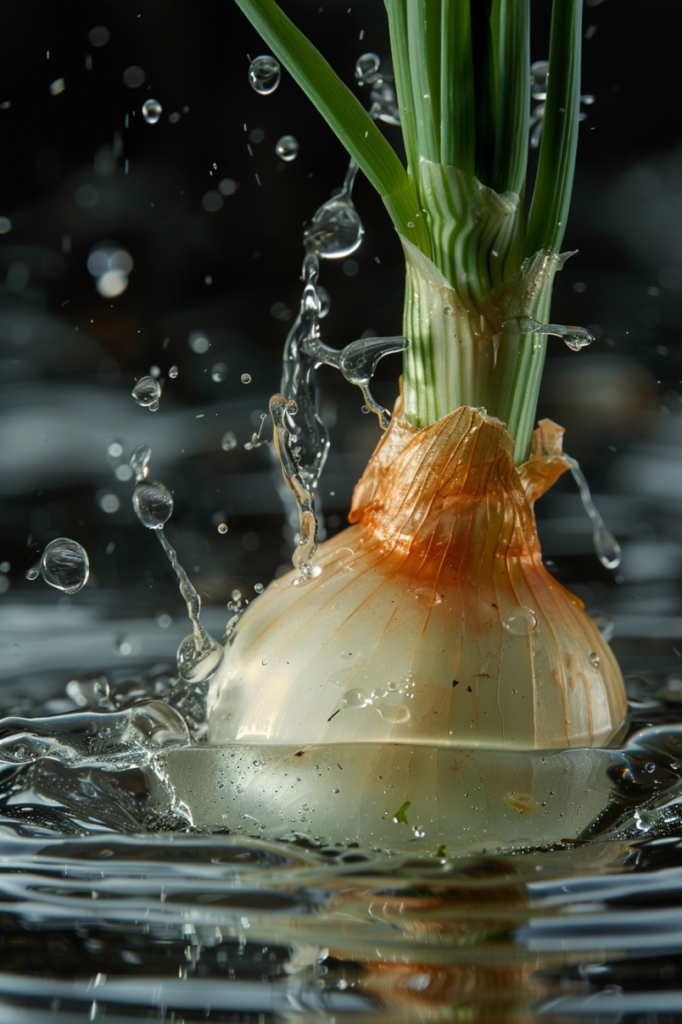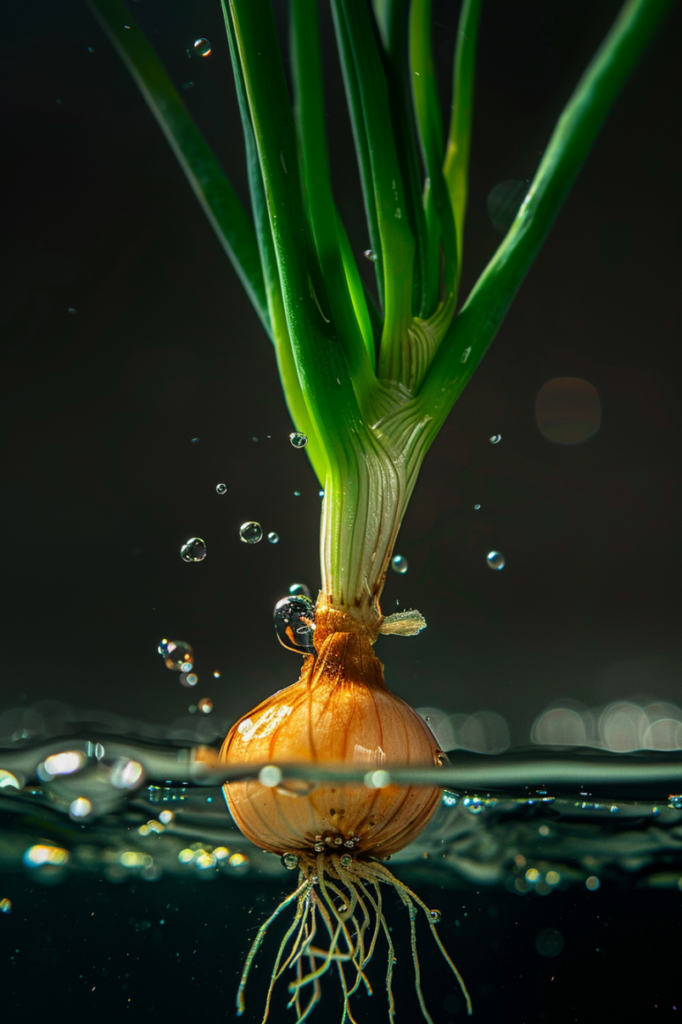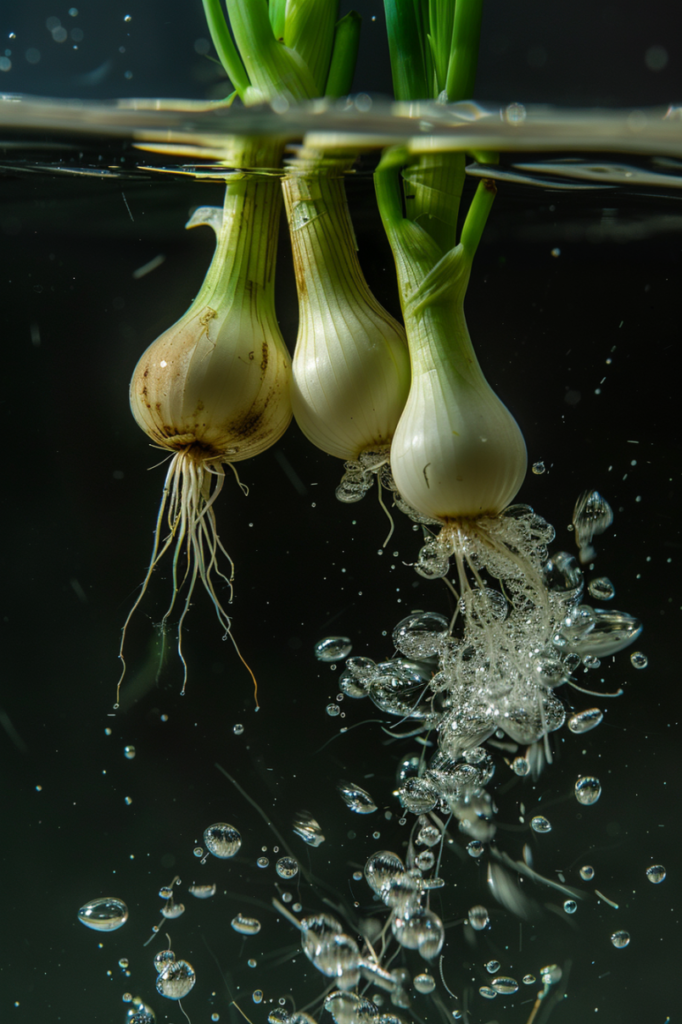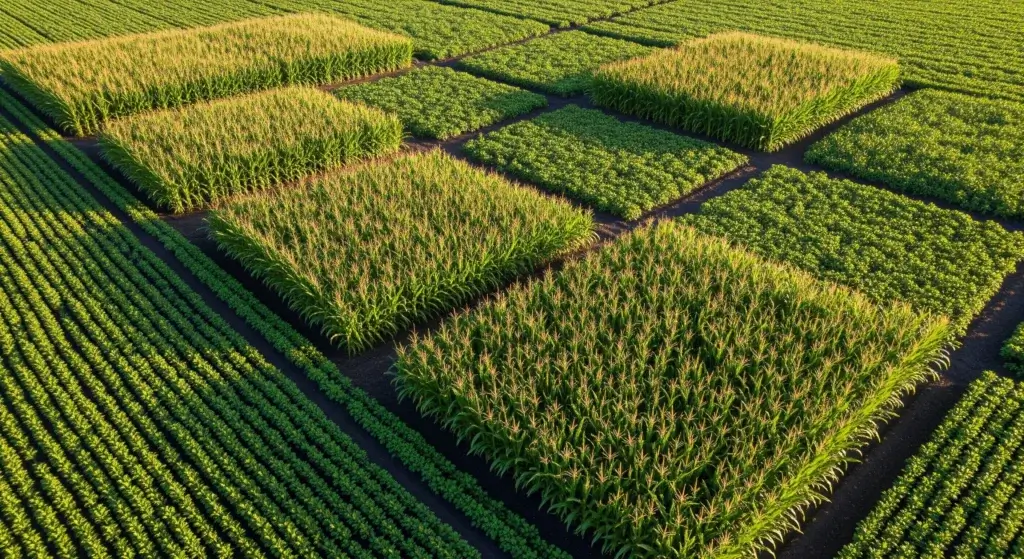
Cultivating onions in water is an enjoyable and straightforward method for growing your own onions at home.
With minimal effort and just a few supplies, you can embark on this rewarding gardening journey.
In this article, we’ll cover the essential supplies needed, selecting the right onion, the process of planting onions in water, and helpful tips for caring and maintaining your onion crop.
List of the Necessary Supplies
Here’s a detailed list of the supplies you’ll need to grow onions in water:
- A healthy onion bulb: When selecting an onion, look for one that is firm, with no signs of rot or mold.
- A clear glass or jar: Opt for a vessel with a wide enough opening to accommodate the onion comfortably while allowing you to observe its growth progress.
- Water: Water is the primary growing medium for your onion. Ensure that you use clean, room temperature water to fill your glass or jar.
- Toothpicks or small pebbles: Toothpicks or small pebbles will be used to suspend the onion bulb in the water.
- A sunny windowsill or a well-lit area: Onions thrive in sunlight, so choose a sunny windowsill or a well-lit area to place your container.

- Read also: A Comprehensive Guide: How To Grow Brussels Sprouts
- Read also: Tips on How to grow Lemon balm
How to Choose a Suitable Onion
To choose a suitable onion for growing in water, consider the following factors:
Healthy onion bulbs
Begin by selecting fresh, healthy onion bulbs without any signs of damage or disease.
Ensure that the bulbs have intact roots attached, as this indicates their vitality and readiness for growth.
Consider onion types
Determine which type of onion is best suited for your region’s climate.
Long-day onions require approximately 14 to 15 hours of daylight to bulb, while short-day onions thrive in environments with around 10 hours of daylight.
Alternatively, day-neutral onions form bulbs irrespective of daylight hours and adapt well to various regions.
Match growing season
Align your onion choice with your region’s growing season.
In colder climates, opt for long-day onions, which are planted in early spring as soon as the ground can be worked and harvested in mid- to late summer.
Conversely, in warmer regions, choose short-day onions, planted in fall, grown through winter, and harvested in late spring.
Day-neutral onions for specific zones
For gardeners in zones 5 and 6, day-neutral onions offer a versatile choice.
They form bulbs in any zone and are particularly well-suited for these regions.
Consider onion varieties
Explore different onion varieties to find the one that suits your preferences and needs.
For example, varieties like Walla Walla Sweet, White Sweet Spanish, and Yellow Sweet Spanish are long-day onions known for their excellent storage capabilities.

Advantages And Disadvantages of Growing Onions in Water
Advantages
Growing onions in water can be a fun and educational experience for both children and adults. Here are some benefits of growing onions in water:
Easy and convenient
Growing onions in water requires minimal effort and space compared to traditional soil-based methods.
You can place the onion in a jar or glass and observe the growth process without the need for soil.
Year-round cultivation
With the right environmental conditions, you can grow onions in water year-round, regardless of seasonal variations in temperature and daylight.
Water conservation
Growing onions in water can be more water-efficient than traditional soil-based cultivation methods, as you only need to change the water every 2-3 days to prevent mold or bacteria growth.
Faster growth
Onions grown in water may grow faster than those grown in soil, as they have a more direct access to nutrients and water.
Endless supply
Once you have successfully grown onions in water, you can continue to propagate new plants from the root end of the onion, providing an endless supply of onions.
Educational experience
Growing onions in water can be a great learning experience for children, teaching them about plant growth, water conservation, and the importance of taking care of their environment.
Disadvantages
Disadvantages of growing onions in water include:
Limited nutrient intake
Onions grown in water may not develop a robust flavor or sturdy shoots, as they lack the essential nutrients found in soil, such as minerals, organic matter, and microorganisms that nourish the plant.
Weaker root systems
Growing onions in water may result in weaker root systems, which can impact the plant’s stability and its capacity to sustain long-term growth.
Constant water maintenance
Regrowing onions in water requires constant water maintenance and changing to encourage growth, which can be time-consuming and may not be as effective as growing them in soil.
Lack of soil-based nutrients
Soil provides a rich mix of minerals, organic matter, and microorganisms that nourish the onions, leading to stronger and more robust growth overall.
Environmental fluctuations
Soil acts as an insulator, providing a buffer against temperature changes, ensuring consistent moisture levels, and protecting the plants from direct sunlight, which contributes to the plant’s resilience and reduces the risk of stress or damage caused by external factors.
Limited longevity
Onions grown in water may not last as long as those grown in soil, as they may not develop a robust flavor or sturdy shoots, and their root systems may be weaker.

Planting Onion in Water
There are two popular methods for planting onions in water: the toothpick method and the pebble method.
Toothpick method
Prepare the onion
Begin by cutting the onion bulb into quarters, ensuring that each piece has both a root end and a green end.
This division helps stimulate growth and allows each segment to develop into a new plant.
Set up the container
Select a clear glass or jar to serve as the container for your onion segments.
Place the onion quarters inside the container with the root end facing downward.
Ensure that the segments are positioned evenly and have enough space to grow without crowding each other.
Secure with toothpicks
To keep the onion quarters submerged in water, use toothpicks to secure them to the sides of the glass or jar.
Insert the toothpicks into the onion segments, ensuring they are firmly attached to the container and remain submerged in water at all times.
Placement in sunlight
Position the glass or jar on a sunny windowsill or in a well-lit area where it can receive ample sunlight.
Sunlight is essential for photosynthesis, which fuels the growth of the onion segments.
Ensure that the container receives at least six hours of sunlight daily for optimal growth.
Pebble method
Prepare the container
Choose a clear glass or jar and fill it with water. This will serve as the growing medium for your onion bulb.
Ensure that the container is clean and free from any contaminants that could hinder the growth of the onion.
Add pebbles for stability
Place small pebbles at the bottom of the glass or jar to provide stability for the onion bulb.
The pebbles help anchor the bulb in place and prevent it from shifting or tipping over as it grows.
Position the onion bulb
Carefully place the onion bulb on top of the pebbles, ensuring that the root end is facing downward into the water.
Position the bulb in the center of the container and adjust the pebbles as needed to support its weight.
Maintain water level
Check the water level in the container regularly and add more water as needed to keep the onion bulb submerged.
It’s essential to ensure that the roots have continuous access to water for proper growth and development.
Sunlight exposure
Like the toothpick method, place the glass or jar in a sunny windowsill or a well-lit area to provide adequate sunlight for the onion bulb.
Sunlight is crucial for photosynthesis and is essential for the bulb to sprout and grow into a healthy plant.

- Read also: A Beginner’s Guide: How to Take Summer Cuttings
- Read also: A Guide on How to Propagate Umbrella Plant
Care and Maintenance
Once you’ve set up your onion in water, here’s how to keep it thriving:
- Water changes: Fresh water is crucial! Change the water every 3-4 days to prevent bacteria growth and root rot.
- Location, location, location: Sun is essential for healthy green onion growth. Place your container in a sunny windowsill that receives at least 6 hours of direct sunlight daily.
- Root happy, onion happy: Ensure the root end of the bulb is always submerged in water, but the bulb itself should stay above the waterline to prevent rot.
- Keep it clean: While the water changes help, occasionally rinse the roots with clean water to remove any slime buildup. This promotes healthy root growth.
- Signs of trouble: Watch out for brown or mushy roots, which indicate root rot. This can be caused by dirty water or the bulb sitting in water.
- The green signal: The green shoots emerging from the top are your reward! As they grow, you might notice the white bulb leaning or tilting.
- Fertilizer (optional): For an extra growth boost, you can add a few drops of diluted liquid fertilizer to the water once a week.
Conclusion
Growing onions in water at home is a gratifying experience.
With the right supplies and care, you can cultivate your own onions effortlessly.
Witness the transformation from bulb to plant and enjoy the satisfaction of harvesting your own produce.
Providing adequate sunlight and consistent care ensures success. Embrace the journey and delight in the simple pleasures of home gardening.



